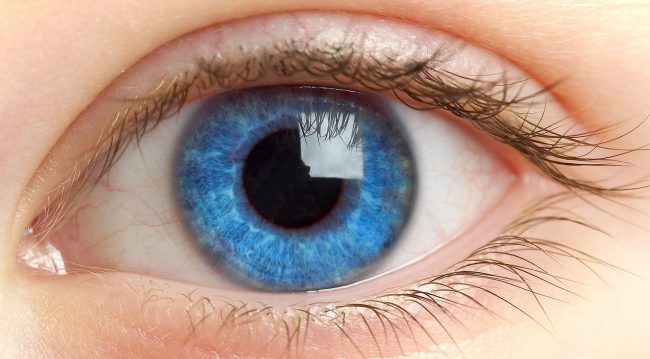Myopia, commonly known as nearsightedness, is becoming more common, especially in children. Experts predict that by 2050, approximately 50% of the world’s population will suffer from myopia, potentially leading to vision loss. Researchers attribute this increase in part to an increase in “near tasking,” which involves focusing on nearby objects such as smartphones and computer screens.
Myopia increases the risk of vision loss
While many people manage their nearsightedness with glasses or contact lenses, some develop a more serious condition called myopic maculopathy. This condition occurs when the macula, the part of the eye responsible for sharp central vision, becomes stretched and damaged as the eyeball stretches into a football-like shape. The impairment causes vision to deteriorate and can lead to severe loss or blindness.
In 2015, myopic maculopathy caused visual impairment in 10 million people. If current trends continue, more than 55 million people are expected to lose vision due to this disease by 2050, and approximately 18 million people worldwide are expected to become blind.
Improving early detection with technology
Because myopic maculopathy is irreversible, early diagnosis is critical. Detecting the disease in the early stages can improve the health of children, especially. Ophthalmologists can prescribe special contact lenses or eye drops that slow the progression of the disease.
A team of researchers at Arizona State University’s School of Computing and Augmented Intelligence is developing new diagnostic tools that use artificial intelligence (AI) to more effectively screen for myopic maculopathy. Yalin Wang, professor of computer science and engineering at the university, emphasizes the technology’s potential to provide critical solutions.
“Artificial intelligence is ushering in a revolution that uses global information to increase diagnostic accuracy, especially in the early stages of disease,” he said. “These advances will reduce medical costs and improve the quality of life for the entire community.”
Award-winning artificial intelligence algorithms
In response to this need, the Medical Imaging and Computational Intervention Association (MICCAI) announced a 2023 goal to improve computerized retinal imaging scanning systems. Myopic maculopathy is now diagnosed using optical coherence tomography, which creates detailed images of the retina using reflected light. These scans are often manually checked by ophthalmologists; This is time consuming and requires specialized knowledge.
Professor Wang and his colleagues, including doctoral student Wenhui Zhu and neuroscientist and assistant professor Dr. His team, including Oana Dumitrescu, participated in the MICCAI competition and was among the winners.
In the first part of their study, they divided myopic maculopathy into five categories based on severity. Accurate classification helps ophthalmologists provide more customized and effective treatment.
Researchers have developed new artificial intelligence algorithms, called NN-MobileNet, designed to help software analyze retinal images more efficiently and predict the correct classification of myopic maculopathy. Their research was published in the journal Myopic Maculopathy Analysis.
Important information about deep neural networks
The team then focused on the scientific community’s efforts to use deep neural networks (a type of artificial intelligence) to estimate the spherical equivalent in retinal scans. Spherical equivalent is an estimate of the eye’s refractive error, which is critical for prescribing corrective lenses.
By developing new AI algorithms that emphasize data quality and relevance, they have achieved extraordinary results while minimizing computing power requirements. This study was also published at: Myopic Maculopathy Analysis.
In addition, Professor Wang collaborated with other teams that won the MICCAI competition on a third scientific paper, published in 2013. JAMA Ophthalmology In September, researchers published their findings to encourage further advances in early and effective diagnosis of myopic maculopathy with the goal of improving health care outcomes worldwide.
Eliminating health inequalities
Professor Wang explained that one of the driving forces behind his work was to address health inequalities. “It is difficult for people living in rural areas to access advanced imaging devices and reach doctors,” he said.
“As AI-based technology becomes available, the quality of life of people around the world, including those living in developing countries, will significantly improve.”
Solution to prevent vision loss
Ross Maciewski, director of the School of Computing and Augmented Intelligence, praised Van’s project as an important example of innovative work in medicine.
“As myopia and myopic maculopathy increase, solutions are needed to prevent vision loss and help healthcare providers offer their patients the best treatment options,” Maciejewski said. “Yalin Wang’s groundbreaking research is a fundamental use of artificial intelligence to solve this terrible medical problem.”













